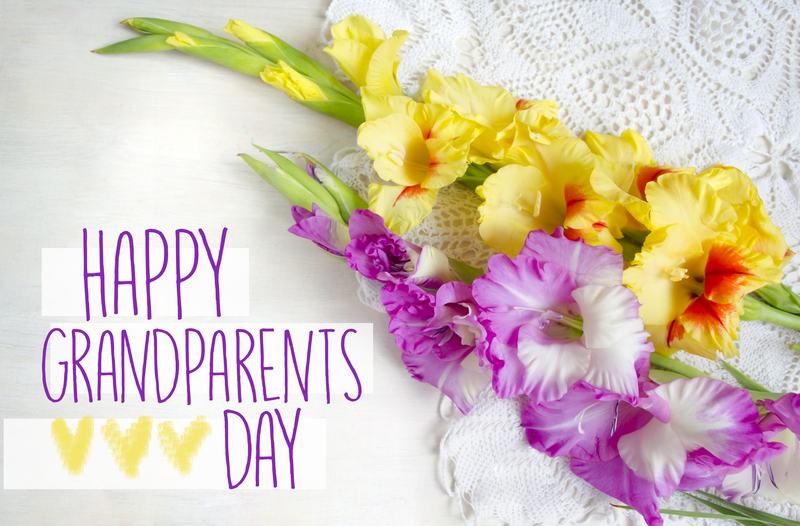Unravel the Secrets of Your Birth Flower and Its Remarkable Insights
Posted on 13/08/2025
Unravel the Secrets of Your Birth Flower and Its Remarkable Insights
Have you ever wondered about the deeper significance of your birth month flower? Much like birthstones and zodiac signs, each month of the year is represented by a specific flower. These birth flowers are much more than beautiful blooms--they carry rich stories, hidden meanings, and fascinating insights that may reveal more about your personality and destiny than you think. In this comprehensive guide, we will unravel the secrets of birth flowers and uncover the remarkable insights they offer.

What Is a Birth Flower? Unveiling an Ancient Tradition
Similar to how astrological signs and birthstones symbolize unique qualities for each month, birth flowers are assigned to every month as emblems of personal traits, characteristics, and meanings. This tradition dates back to the Victorian era, when floriography--the language of flowers--was commonly used to express emotions that were otherwise unspoken. People exchanged blooms to communicate messages of love, friendship, or even secrecy.
Why Birth Flowers?
Choosing a personal flower associated with your birth month goes beyond aesthetics. Here's why your birth flower matters:
- Personal symbolism: Birth flowers symbolize virtues, aspirations, and hidden qualities connected to your personality.
- Historical significance: Many cultures used flowers as a means to convey secret or profound meanings, especially in times when open expression was restricted.
- Connection to nature: Embracing your birth flower deepens your bond with nature and the changing seasons.
Discovering the Secret Meanings of Birth Flowers by Month
Let's take a closer look at each month and the fascinating stories hiding in your birth month flower.
January: Carnation and Snowdrop
Carnation (Dianthus caryophyllus): Symbolizing admiration, love, and distinction, the carnation reflects resolve and loyalty in the face of adversity--perfect for January-born individuals.
Snowdrop: This delicate bloom brings messages of hope and renewal after the dark of winter, signifying purity and optimism.
February: Violet and Primrose
Violet: Representing humility, faith, and spiritual wisdom, this modest flower underlines February's unique personality.
Primrose: As one of the first blooms of spring, it conveys young love and new beginnings.
March: Daffodil
Daffodil (Narcissus): Known for symbolizing rebirth, joy, and resilience, daffodils encourage optimism and personal growth for March birthdays.
April: Daisy and Sweet Pea
Daisy: With its meaning of innocence and loyalty, the daisy is perfect for those born in April.
Sweet Pea: Denotes blissful pleasure and goodbyes, often given as a thank you or farewell.
May: Lily of the Valley and Hawthorn
Lily of the Valley: Signifying sweetness and humility, this aromatic flower brings wishes of happiness.
Hawthorn: Associated with hope and supreme happiness, hawthorn is often seen in May celebrations.
June: Rose and Honeysuckle
Rose: The timeless rose stands for love, passion, and honor. Each color offers its own message, making it a multifaceted birth flower.
Honeysuckle: Evoking devoted bonds of love, honeysuckles represent generous, heartfelt affection.
July: Larkspur and Water Lily
Larkspur: This vibrant flower symbolizes openness and positivity.
Water Lily: Seen as a symbol of purity and enlightenment, especially in spiritual traditions.
August: Gladiolus and Poppy
Gladiolus: With its stately spikes, the gladiolus embodies strength, integrity, and remembrance.
Poppy: Represents imagination and restful sleep, with red poppies signifying remembrance.
September: Aster and Morning Glory
Aster: This star-shaped flower denotes wisdom, patience, and elegance, suitable for September birthdays.
Morning Glory: Represents affection, love, and the fleeting nature of life.
October: Marigold and Cosmos
Marigold: Signifies warmth, creativity, and the power of the sun.
Cosmos: Denotes harmony and tranquillity, bringing good luck.
November: Chrysanthemum
Chrysanthemum: Associated with loyalty, joy, and a life well-lived, this flower brings cheer to dreary November days.
December: Narcissus and Holly
Narcissus: Stands for hope, self-esteem, and new adventures in the coming year.
Holly: A symbol of protection and goodwill, holly also brings festive energy to December.
How Your Birth Flower Sheds Light on Your Personality
Each birth flower reflects not just the season in which you were born, but also the attributes you are said to embody. From the brave carnation to the sincere Aster, your birth month bloom could illuminate special secret traits:
- January (Carnation/Snowdrop): Brave, loyal, and a source of comfort.
- February (Violet/Primrose): Intuitive, wise, and quietly powerful.
- March (Daffodil): Optimistic, creative, and resilient.
- April (Daisy/Sweet Pea): Natural-born peacemakers, cheerful, and honest.
- May (Lily of the Valley/Hawthorn): Gentle, nurturing, and hopeful.
- June (Rose/Honeysuckle): Deeply loving, loyal, and passionate.
- July (Larkspur/Water Lily): Open-minded, adventurous, and thoughtful.
- August (Gladiolus/Poppy): Strong-willed, imaginative, and generous.
- September (Aster/Morning Glory): Intelligent, grounded, and harmonious.
- October (Marigold/Cosmos): Creative, warm, and adaptable.
- November (Chrysanthemum): Loyal, joyful, and wise.
- December (Narcissus/Holly): Hopeful, confident, and spirited.
Celebrating Your Unique Birth Flower: Meaningful Ideas
Embracing your unique birth flower can be both inspiring and practical. Here are creative ways to honor your personal floral symbol:
- Incorporate into home decor: Introduce your birth flower as art, wallpaper, or fresh blooms for personalized beauty.
- Gift giving: Offer birth flower bouquets for birthdays or significant milestones to add a meaningful touch.
- Jewelry and accessories: Wear necklaces, bracelets, or charms featuring your special flower for a custom look.
- DIY crafts: Make homemade candles, soaps, or pressed flower bookmarks using your birth month flower.
- Gardening: Plant your birth flower in your garden to connect with its seasonal energy year after year.
The Global Influence: Birth Flowers Across Cultures
While the birth flower concept is popular in Western cultures, many societies worldwide assign distinct meanings and roles to significant flowers:
- Japan: Each month has its own representative flower, called hana, rooted in centuries-old tradition and poetry.
- Victorian England: The language of flowers was intricate, where every gift could convey complex coded messages.
- China: Certain flowers represent longevity, luck, or fortune, like the peony--a symbol of wealth.
- Native American: Flowers are used for medicinal, spiritual, and cultural rituals based on seasonal availability.
Connecting these rich cultural perspectives deepens your appreciation for your personal flower and what it represents.
Birth Flowers vs. Zodiac Signs and Birthstones: How Do They Compare?
Many people seek personal meaning from a variety of sources:
- Birthstone: Each gemstone relates to a month and attributes healing or luck-bringing qualities.
- Zodiac sign: These reflect celestial alignments and are believed to impact personality and destiny.
- Birth flower: Rooted in nature, associated with emotional and symbolic meanings, easily personalized through gifts and daily life.
While birthstones and zodiac signs are powerful, birth flowers offer a unique form of symbolism drawn from the living world, refreshing and tangible in everyday experiences.
Choosing the Right Birth Flower: Tradition Versus Modernity
There are occasional variations in the designated birth flower for each month--some traditions recognize more than one, influenced by region and climate. Commonly accepted blooms, as described above, still form the backbone of modern associations. When in doubt, consult multiple reputable sources and choose the flower that most resonates with you.
Practical Tips: Caring for Your Birth Flower
If you're inspired to nurture your birth flower at home, here are tips to keep it thriving:
- Research your flower's needs: Every bloom has unique requirements for sunlight, water, and soil.
- Embrace seasonality: Some birth flowers, like lilies and carnations, are hardy, while others need special attention.
- Start from seed or bulbs: Growing your bloom from scratch can be rewarding and symbolic.
- Use in drying or pressing: Preserve the petals for keepsakes, floral art, or crafts.

Frequently Asked Questions--Birth Flower Insights
-
Can I have more than one birth flower?
Yes! Some months assign two birth flowers, and you may identify with both or select the one that's most meaningful to you. -
Is there a birth flower for every birthday?
Traditionally, they are by month, but some cultures assign flowers to individual days or zodiac periods. -
How accurate are the personal traits and insights birth flowers claim to reveal?
While not scientific, these meanings are steeped in tradition and symbolism, providing insightful inspiration. -
What if my favorite flower isn't my birth flower?
Celebrate both! Incorporate your birth flower for tradition and your favorite flower for personal joy.
Conclusion: Embrace the Beauty and Insights of Your Unique Birth Flower
Flowers have inspired poets, lovers, and dreamers for generations. By understanding the deeper meanings of your birth month flower, you gain unique insight into your own personality, emotional landscape, and place within the cycles of nature. Whether you wear it, plant it, gift it, or simply enjoy its symbolism, your birth flower is a beautiful emblem to cherish. So, unravel the secrets of your birth flower and let its remarkable insights deepen your connection to self, season, and story!
Ready to learn even more about your birth flower? Start your journey by exploring local botanical gardens, consulting with florists, or creating a personalized journal devoted to flower meanings and your own experiences. Remember, the language of flowers is always blooming anew--just like you.
Latest Posts
Discover the meanings of your birth month blooms
Unravel the Secrets of Your Birth Flower and Its Remarkable Insights
Your Ultimate Guide to Hydrangea Maintenance
Exploring the deep symbolism and vibrant colors of Peony flowers
Unveiling the 5 Most Beloved Flowers for Valentine's Celebrations





